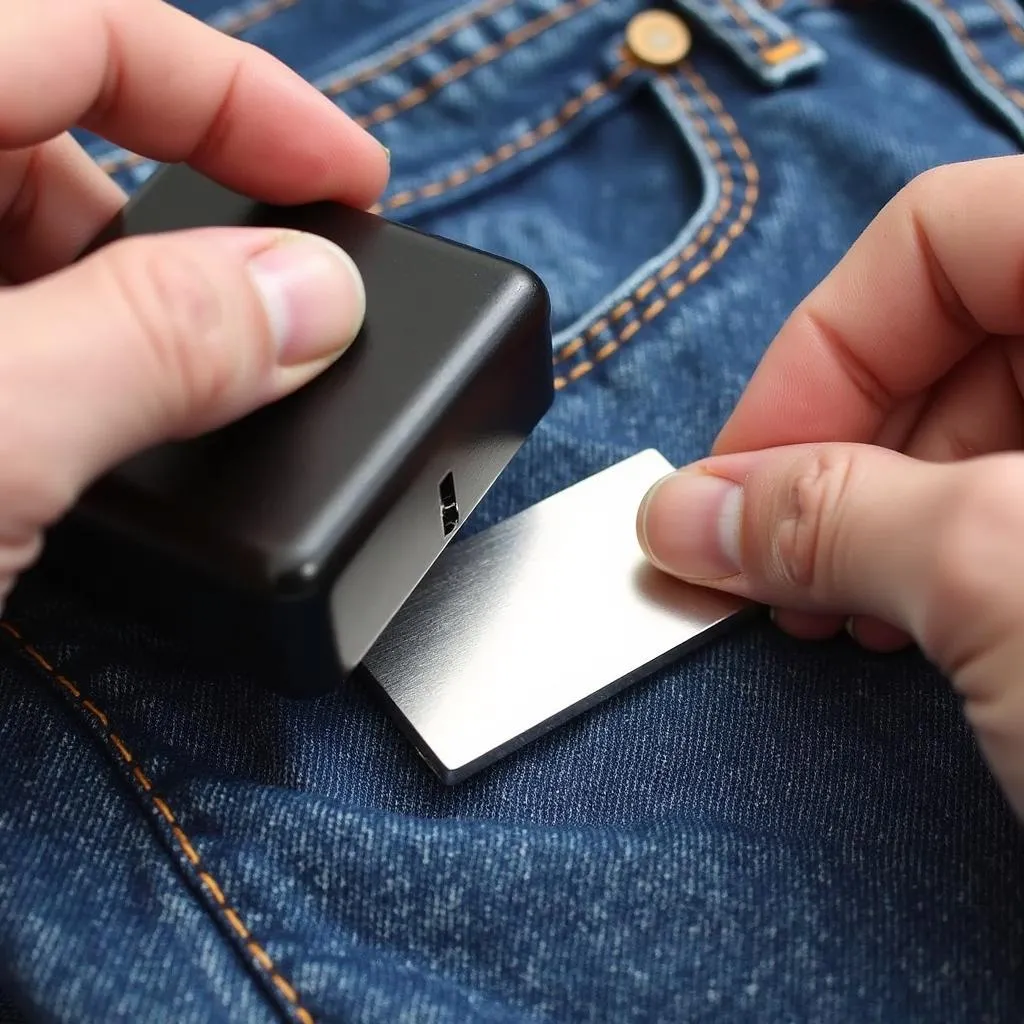A car battery parasitic draw can be a frustrating and perplexing issue, leaving you stranded with a dead battery. Understanding the causes, symptoms, and solutions to this common electrical problem is crucial for any car owner. This guide provides a deep dive into everything you need to know about car battery parasitic draw, empowering you to diagnose and fix the issue, or at least understand it well enough to discuss it intelligently with a mechanic.
A parasitic draw occurs when one or more electrical components in your vehicle continue to consume power even after the ignition is turned off and the key is removed. This slow but steady drain can eventually deplete your battery, leaving you unable to start your car. car battery parasitic draw test Identifying and addressing this “electrical vampire” is essential for maintaining a healthy battery and avoiding unexpected breakdowns.
Understanding the Causes of Parasitic Draw
Several culprits can contribute to a parasitic draw car. Some common causes include faulty relays, malfunctioning interior lights, glove box lights, trunk lights, door switches, faulty alternators, aftermarket accessories, and even corroded wiring. Each of these can silently drain your battery over time. parasitic draw car Pinpointing the source of the draw is the first step towards resolving the problem.
Common Culprits Behind a Draining Battery
- Faulty Relays: Relays are electromechanical switches that control various electrical circuits in your car. A faulty relay can get stuck in the “on” position, continuously drawing power.
- Malfunctioning Interior Lights: A seemingly innocuous interior light left on, or a faulty door switch that prevents the light from turning off, can contribute significantly to battery drain.
- Aftermarket Accessories: Improperly installed aftermarket accessories, such as stereos or alarms, can create a parasitic draw.
- Corroded Wiring: Corrosion in wiring can create unintended pathways for electricity, leading to a slow but steady drain on your battery.
How to Detect a Parasitic Draw
Detecting a parasitic draw involves using a multimeter to measure the current flow from your battery when the car is off. This parasitic amp draw test requires disconnecting the negative battery cable and connecting the multimeter in series between the cable and the battery terminal.
Performing a Parasitic Draw Test with a Multimeter
- Gather your tools: You’ll need a multimeter and possibly a set of jumper cables (for retaining radio presets).
- Prepare the vehicle: Turn off all lights, accessories, and the ignition.
- Disconnect the negative battery cable: Carefully remove the negative cable from the battery terminal.
- Connect the multimeter: Set your multimeter to the DC amps setting. Connect the red lead to the negative battery cable and the black lead to the negative battery terminal.
- Observe the reading: A reading above 50 milliamps (0.05 amps) generally indicates a parasitic draw.
Fixing the Parasitic Draw
Once you’ve identified a parasitic draw, the next step is to locate the source. This can involve systematically removing fuses one by one and observing the multimeter reading. When the reading drops significantly after removing a particular fuse, you’ve likely isolated the circuit causing the draw.
John Smith, a seasoned automotive electrician, advises, “Patience is key when diagnosing a parasitic draw. It’s a process of elimination, and rushing can lead to misdiagnosis.”
Isolating the Circuit Causing the Drain
- Start with the interior fuses: Begin by removing interior fuses one at a time, checking the multimeter reading after each removal.
- Move to the under-hood fuses: If the draw persists, proceed to the fuses located under the hood.
- Check relays: Inspect relays for signs of damage or sticking.
- Inspect wiring: Examine wiring for corrosion or damage.
tesla dead 12v battery can also experience parasitic draw. Though less common, it’s important to be aware of this possibility in electric vehicles as well.
Preventing Future Parasitic Draws
Preventing future parasitic draws involves regular maintenance and careful installation of aftermarket accessories. Ensure all accessories are installed correctly and that wiring is in good condition.
Jane Doe, an automotive engineer, emphasizes, “Regularly checking your battery’s health and addressing any electrical issues promptly can help prevent parasitic draw problems.”
my battery went flat could be a sign of a parasitic draw. If you’ve experienced a dead battery, it’s important to investigate the underlying cause.
Conclusion
Car battery parasitic draw can be a significant nuisance, but with the right knowledge and tools, you can diagnose and resolve the issue. By understanding the causes, symptoms, and solutions, you can keep your car’s electrical system healthy and avoid being stranded with a dead battery. Regular maintenance and a proactive approach to electrical issues are crucial for preventing future parasitic draw problems. Don’t let an “electrical vampire” drain your battery and leave you stranded!

